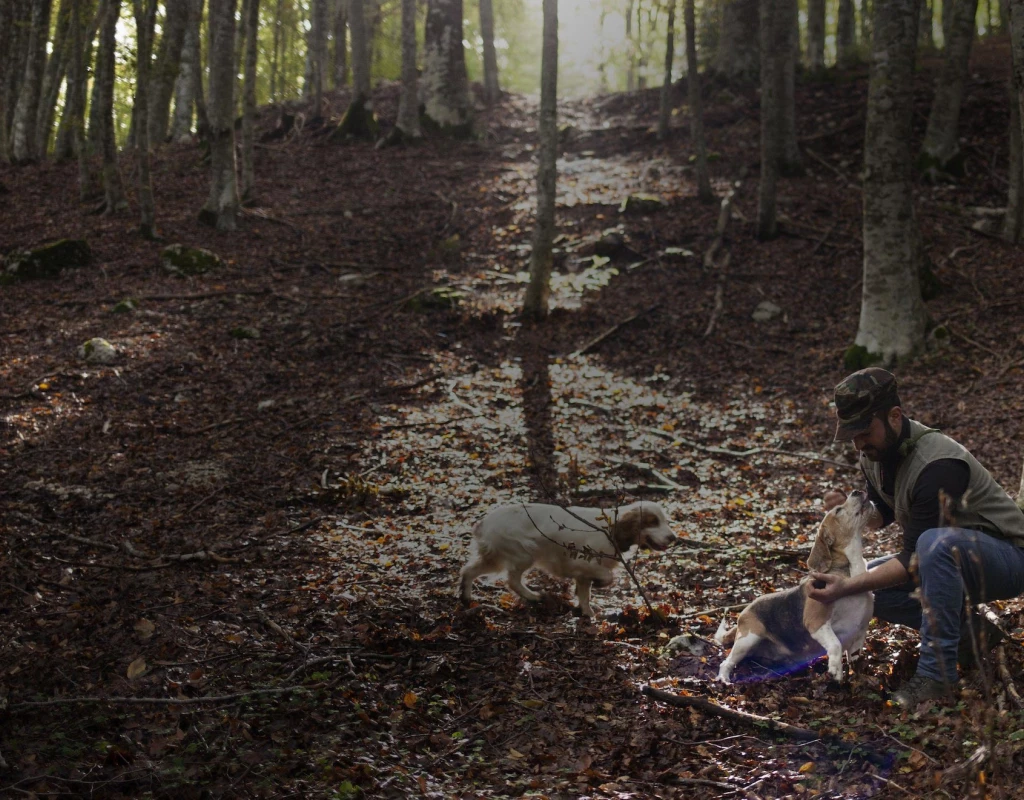In the mountains surrounding Laceno, in the municipality of Bagnoli Irpino, it seems that eagle owls and marmots secretly peek at the steps of anyone entering these woods, so much the nature is enveloping.
A wood in Bagnoli Irpino | Ph. Machi di Pace - Trentaremi
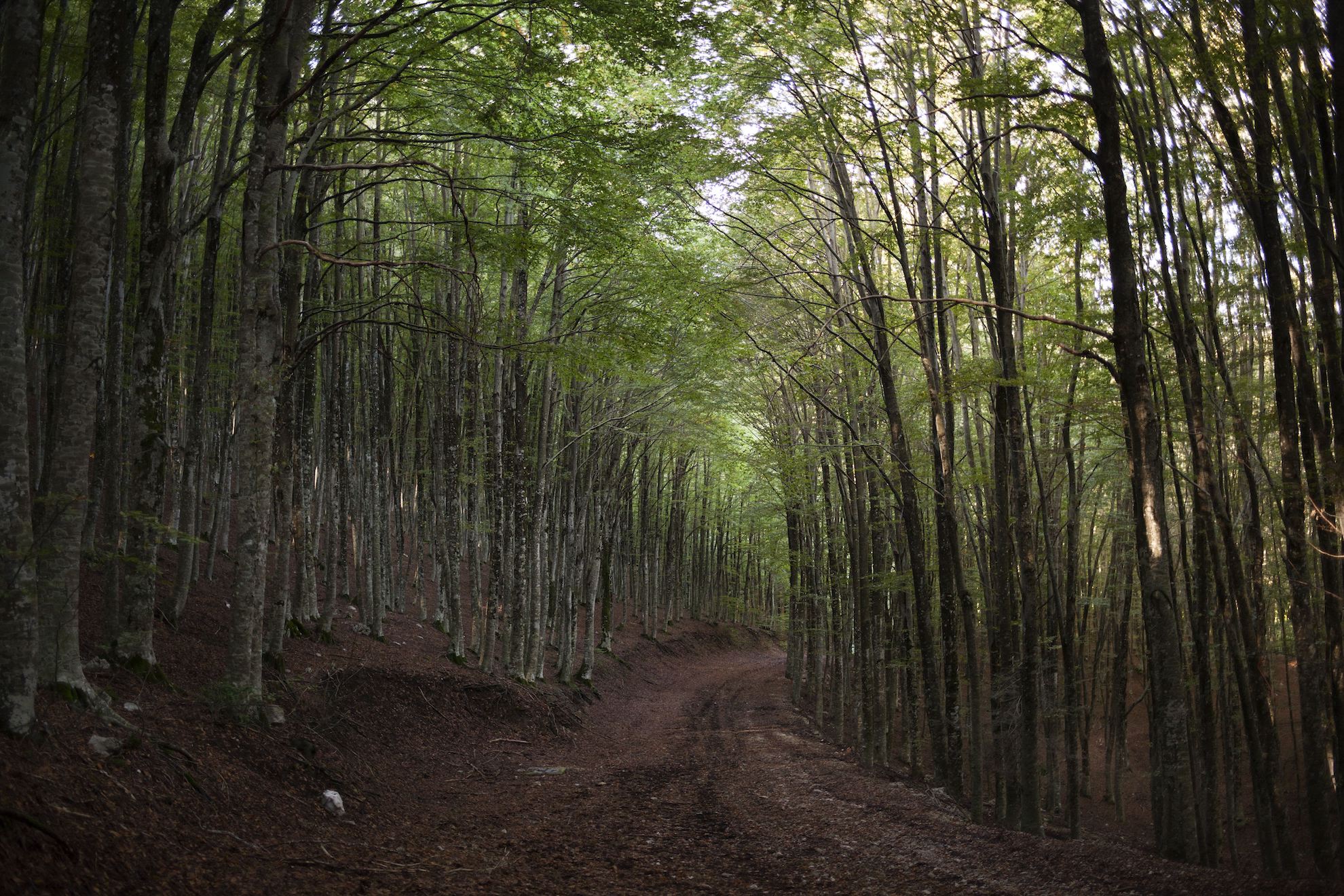
But the real king of this green part of Irpinia is a solitary and reserved mushroom, which lives at an altitude of one thousand, below ground, far from curious eyes and intrusive steps: the black truffle.
Lorenzo, a 29-year-old quarryman, accompanies us on this adventurous search for Nero di Bagnoli, along with his two tireless detectives: Luna and Nuvola. Luna is 3 years old, with all the exuberance of the little cockers. Nuvola is a beagle, a unique case for truffle hunting, and is a small champion of holes. A real four-legged truffle detector that once brought home a 600 gram nugget! «I prefer females - Lorenzo kids - The males are more easily distracted because they think of marking the territory or confuse truffle hunting with that of female dogs».
Lorenzo rewards Nuvola for having found a truffle | Ph. Machi di Pace - Trentaremi
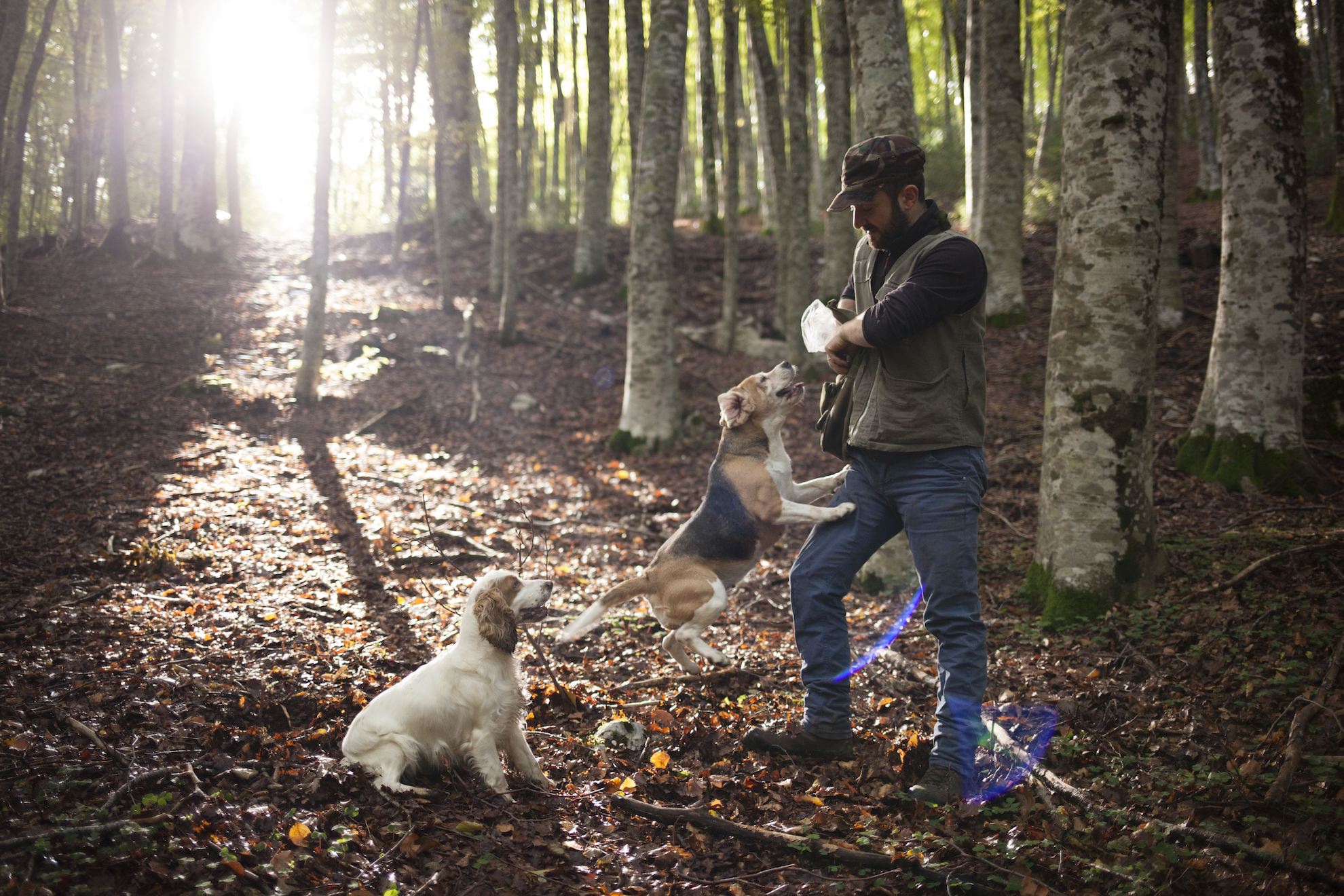
Luna and Nuvola are the stars of this thrilling hunt, Lorenzo is only their assistant: he encourages them as the coach would do with a boxer in the ring. At just over 35 centimeters high, they run wildly through the woods, nosing out the roots of black beeches and pines and pausing for a drink of rainwater in the hollows of the trees. Among them there is a hierarchy and the most expert one leads the way to the less experienced colleague.
When they wag their tails by raising the dust of the soil it means that the treasure is underground... Eureka! You just have to dig, collect the rough diamond and close the hole to make the fungus regenerate. A plot that repeats itself every day from September 1 to April 15, from an hour before dawn to an hour after sunset.
A black nugget just found | Ph. Machi di Pace - Trentaremi
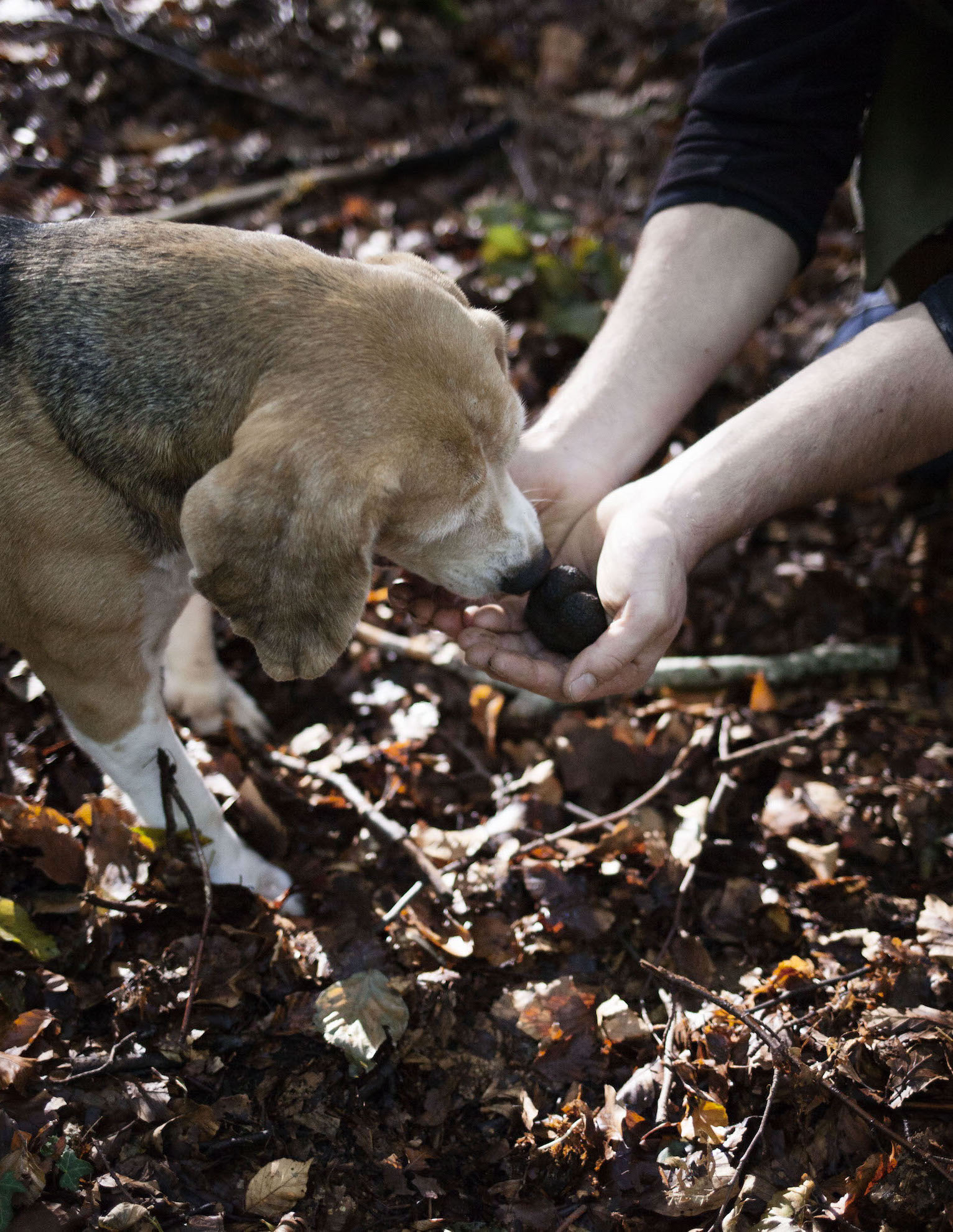
Truffle inside | Ph. Machi di Pace - Trentaremi

«I became a quarryman thanks to the love I have for dogs - Lorenzo tells us - I teach through play: I insert small pieces of truffle into the plastic wrap of a small egg, I hide it and the dog starts looking for it. Once found, bring it to me and reward it with a biscuit. During the search we play in the same way, the important thing is that the dogs are fasting so they concentrate to get the reward».
The quarryman is jealous of his truffles as a gold researcher can be of a mine. He does not give any advice on where to look for these excellences. «It's not just a business issue - Lorenzo specifies - but also the sacrifice spent looking for areas where truffles are hidden». The only competitors that you can't beat are the wild boars, so fond of these first fruits to devastate the land.
A greta friendship there is between the dog and the quarryman | Ph. Machi di Pace - Trentaremi
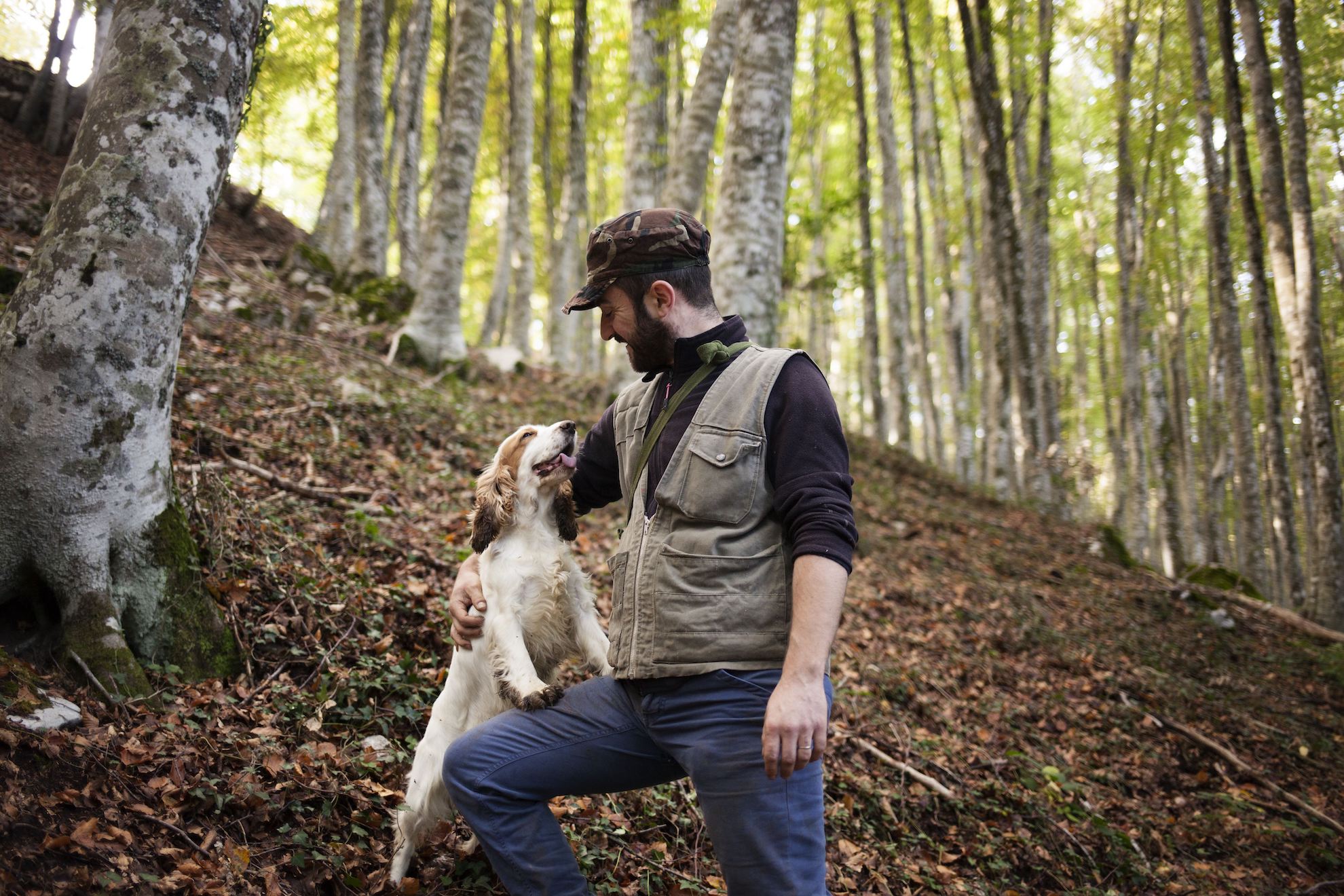
Unjustly declassified to the Ordinary Black Truffle, the Nero Bagnolese is technically called Tuber Mesentericum Vitt from the name of the Milanese botanist Carlo Vittadini, who in 1835 included it in his book “All the truffles of Italy”. The inner part, dark gray in color, is also characterized by white veins reminiscent of the intestine (from the Latin mesentericum which means similar to the intestine).
The size of an egg, it has the shape of an irregular globe. The rind is dark and warty. The scent is penetrating, similar to tar, and reminds of carbolic acid. The taste is delicate with a slightly bitter aftertaste.
The truffle can be grated to flavor the seasoning | Ph. Machi di Pace - Trentaremi
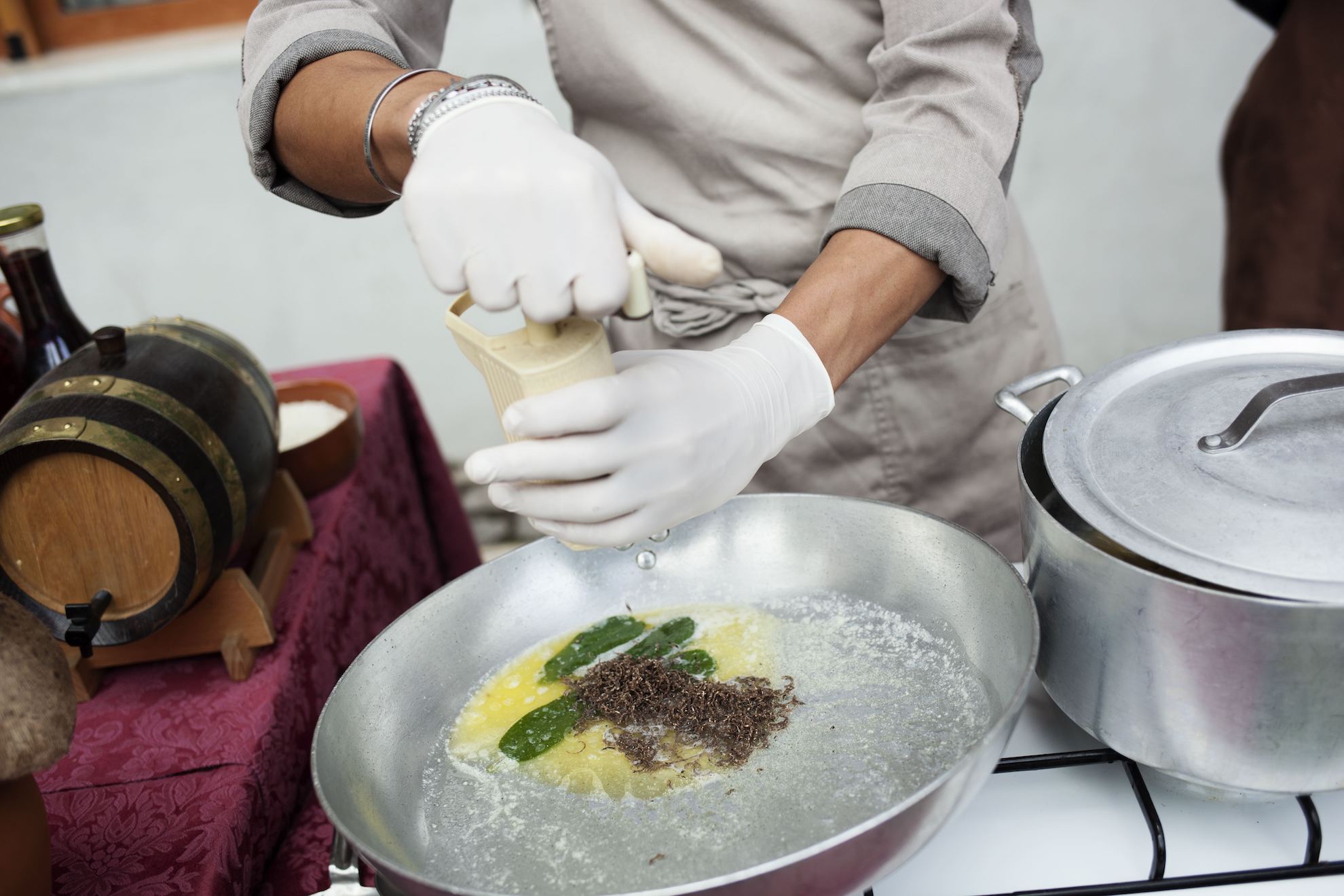
Its peculiarity lies in the fact that it can also be eaten cooked, as opposed to other truffles which are used strictly raw in the kitchen. It is an excellent ingredient for classic fettuccine or ravioli made with pecorino bagnolese and sheep's milk ricotta, to be prepared with butter and sage. It can be grated on a boiled egg or on a slice of hot caciocavallo cheese. But also as a condiment in the traditional salad to be combined with “papaccelle” (a particular type of pepper), green olives and anchovies.
The truffle is never missing on the table of Bagnolesi who always eat it very fresh. In fact, it can be stored for a few days in the fridge wrapped in a sheet of kitchen paper inside a tightly closed glass jar.
Chips of Nero di Bagnoli on homemade ravioli | Ph. Machi di Pace - Trentaremi
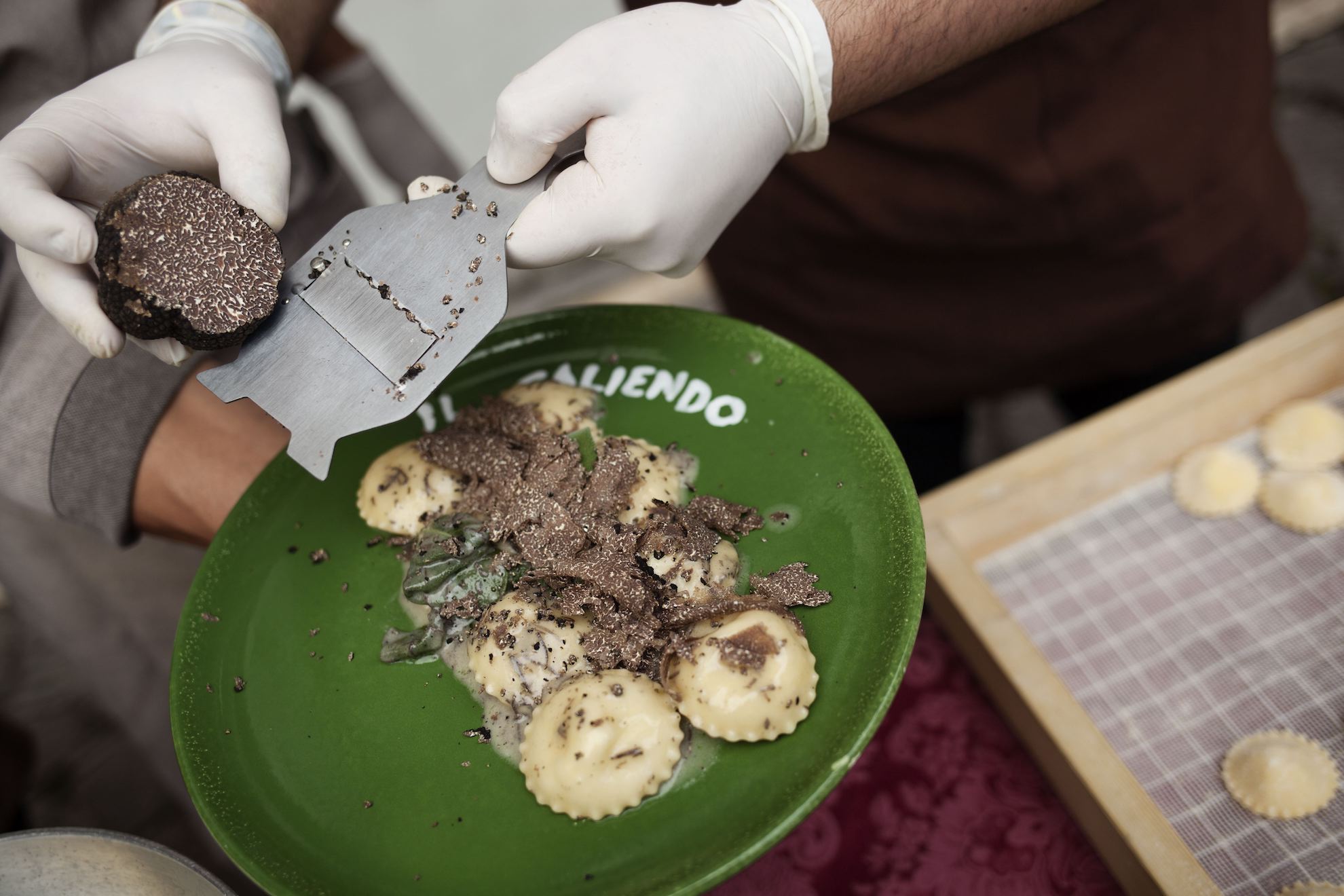
«Today the Nero di Bagnoli is neglected compared to other truffles because it is not very sponsored», explains professor Michelino Nigro, expert on history of Irpinia. And it is automatically depreciated: it costs about € 150 per kilo, while the “scraps” are worth less than half. Yet it is a glorious underground mushroom. «In 1734 Charles III of Bourbon was welcomed to Avellino with a basket of truffles - Nigro tells us - Later, in 1806, Giuseppe Bonaparte was also honored with this precious gift. In 1850 a map of the production of the Kingdom of the Two Sicilies was published in which the town of Bagnoli Irpino was marked with the truffle icon. Since that moment it became the symbol of our community and many personalities received it as a present: from King Vittorio Emanuele III of Savoy to the President of the Republic Sandro Pertini».
